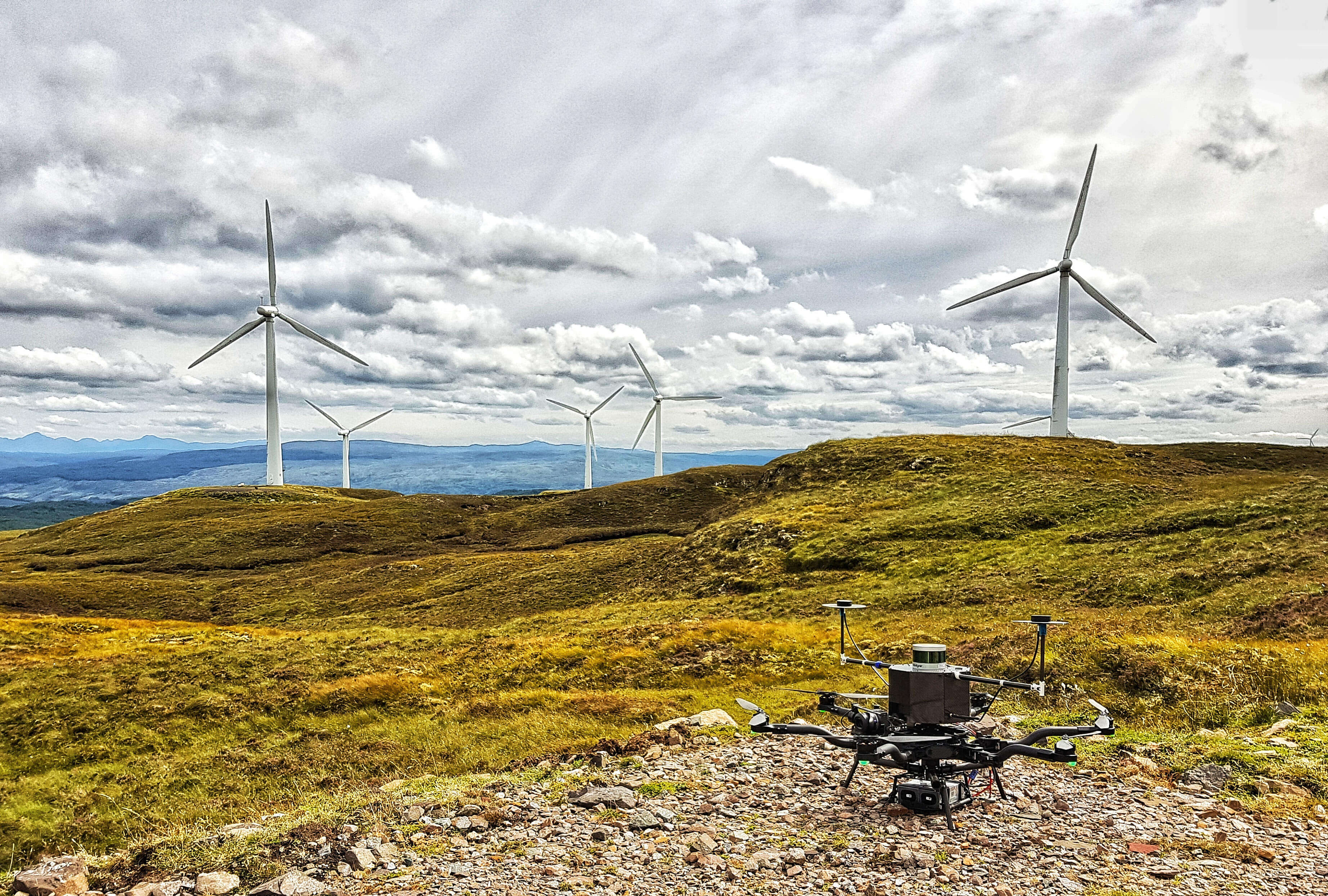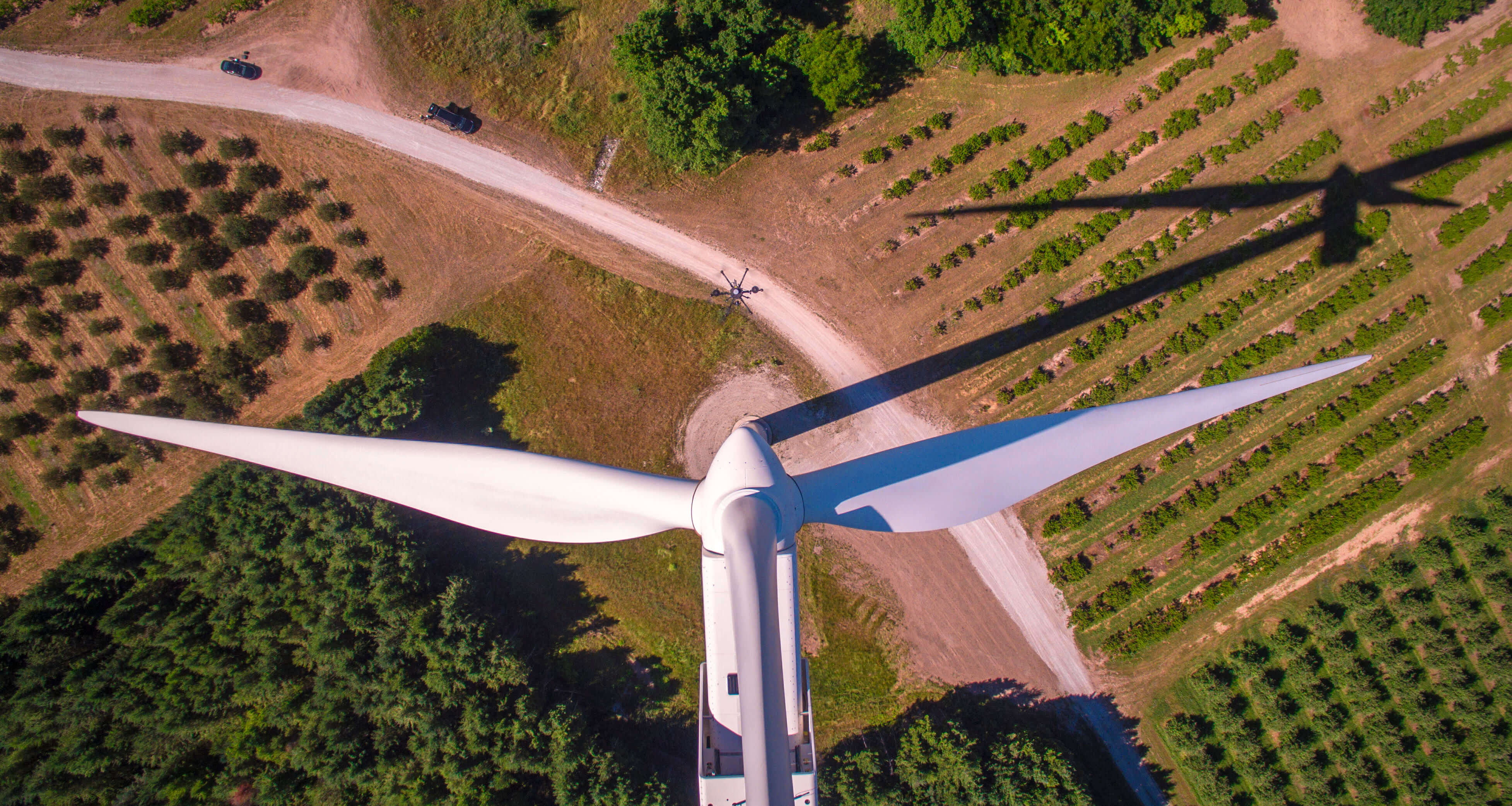A few years ago, sending wind technicians up-tower was the O&M option to conduct turbine tower and blade inspections. Advancements in drone technology or UAVs (unmanned aerial vehicles), however, have turned such labor-intensive maintenance efforts into a more precise, streamlined process.

Automated blade inspections are making 15-minute wind-turbine blade inspections possible in many cases. Using a drone and highly intuitive software allows for repeatability, high-quality data, and safer inspections. (Image: SkySpecs)
The global wind-turbine inspection drone market is expected to $6 billion in the next five years and by 2024, according to Navigant Research — and for good reasons. Manual turbine inspections are a demanding, time-consuming task that typically takes a significant percentage of a wind developer’s annual operating costs. Drones typically offer quicker, more accurate and cost-effective inspection work of wind turbines and blades than conventional methods.
What’s more — and ultimately most important — is the safety advantage offered by UAVs. “Choosing a drone for wind-turbine blade inspections is the safer choice,” says Ben Marchionna, Head of Global Operations at SkySpecs, a U.S.-based robotics company. “It is far safer than a wind tech hanging off a rope at high altitude while in high winds and for extended periods of time, often day after day.” This type of manual inspection can take up to a full day for a single tower and months for a full fleet of turbines.
“On several occasions, we’ve identified critical damage by drone inspection that our customers were unaware of,” says Marchionna. “The repeatable, year-over-year data gained enables wind operator to determine the best and safest time to repair early damage.”
SkySpecs says it is the first and currently only provider of completely automated blade inspections using a drone and highly intuitive software that allows for repeatability, high-quality data and images, and safer inspection. Turbine inspections can be done in as little as 15 minutes in many cases.
“Automated drone inspections are key,” says Theresa Trevor, Director of Marketing of SkySpecs. She points out that steadying a drone near a turbine tower and blades is challenging in the unstable, windy conditions typical at most wind farms. “As a drone operator navigates around turbine blades, the wind speed and direction can change rapidly and unexpectedly because of how the turbine structure interacts with the wind. This makes manual flights exceedingly challenging and potentially dangerous.”
Where in-person manual inspections are subject to human error, automation is safer because a drone’s built-in sensors are far more sensitive and accurate than an operator working from the ground. “Autonomous inspection drones can maintain precise location, control, and image capture while safely navigating around turbine towers,” says Trevor.

SkySpecs recently introduced Horizon, an analytics, reporting, and management software platform for the wind energy industry. Horizon lets clients review and optimize repair campaigns based on predictive-maintenance recommendations from the data obtained during an inspection.
In addition, a well-executed automated flight relieves stress and prevents operator fatigue from looking up-tower for long periods of time. Safety is a particularly critical feature at offshore wind sites, which are expected to develop in the United States over the next few years. Reports point to a predicted 2,000 MW of offshore wind in commercial operation by 2023, and more than 25,000 MW planned over the next decade or so.
In June of 2018, SkySpecs successfully completed an automated inspection of the world’s largest offshore wind turbine in the Irish Sea, at Ørsted‘s Burbo Bank Extension project. “Autonomous drone inspections are particularly valuable offshore, saving operators additional crew-transport fees and O&M techs unnecessary and extremely risky trips by sea,” Trevor says.
Optimizing field time is an additional key to a successful and cost-effective wind-farm inspection. At offshore sites, this goal is critical because of the potential limitations of the environment. “Variables such as distance from shore, number of daylight hours, and wave height play a major role in inspection success and should be accounted for prior to drone flight,” she shares.
Here are additional safety tips for choosing a drone inspection service.
- Only partner with an experienced, well-trained, and certified drone operator.
- Ensure the operator is compliant with local law and verify documentation accordingly. Each country has different and changing regulations with varying standards, constraints, and approval processes.
- A drone operator should also have a documented process for pre-flight checks in place.
- Avoid drone “hobbyists,” who typically lack wind experience and extensive drone flying skills. They may pose a greater risk to wind-turbine site operations.
- It is important to note that offshore wind turbine inspections vary in comparison to onshore ones. There are far greater risks offshore that may result in asset damage, lost revenue, or serious accidents, so ensure the drone operator has offshore experience.
“Autonomous drones can quickly and accurately spot, measure, and analyze critical damage to blades for necessary turbine repairs,” says Trevor. “Such benefits are further magnified when one considers that the technology has led to great improvements in project efficiency and, most importantly, safety.”
Filed Under: Drones, News, O&M, Offshore wind, Training




